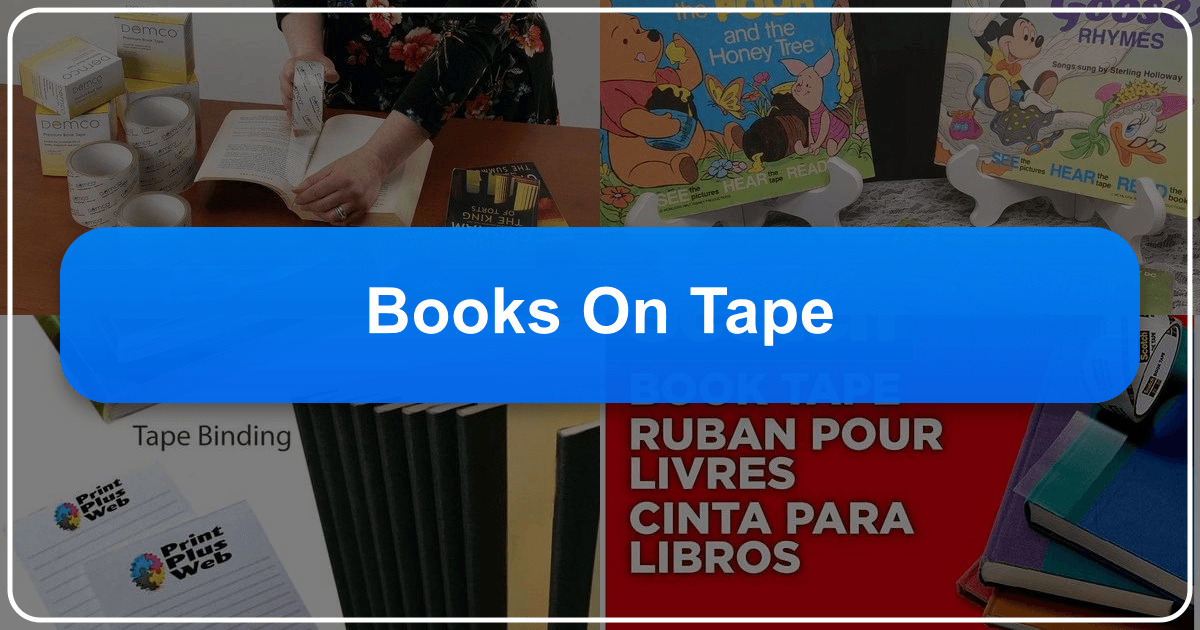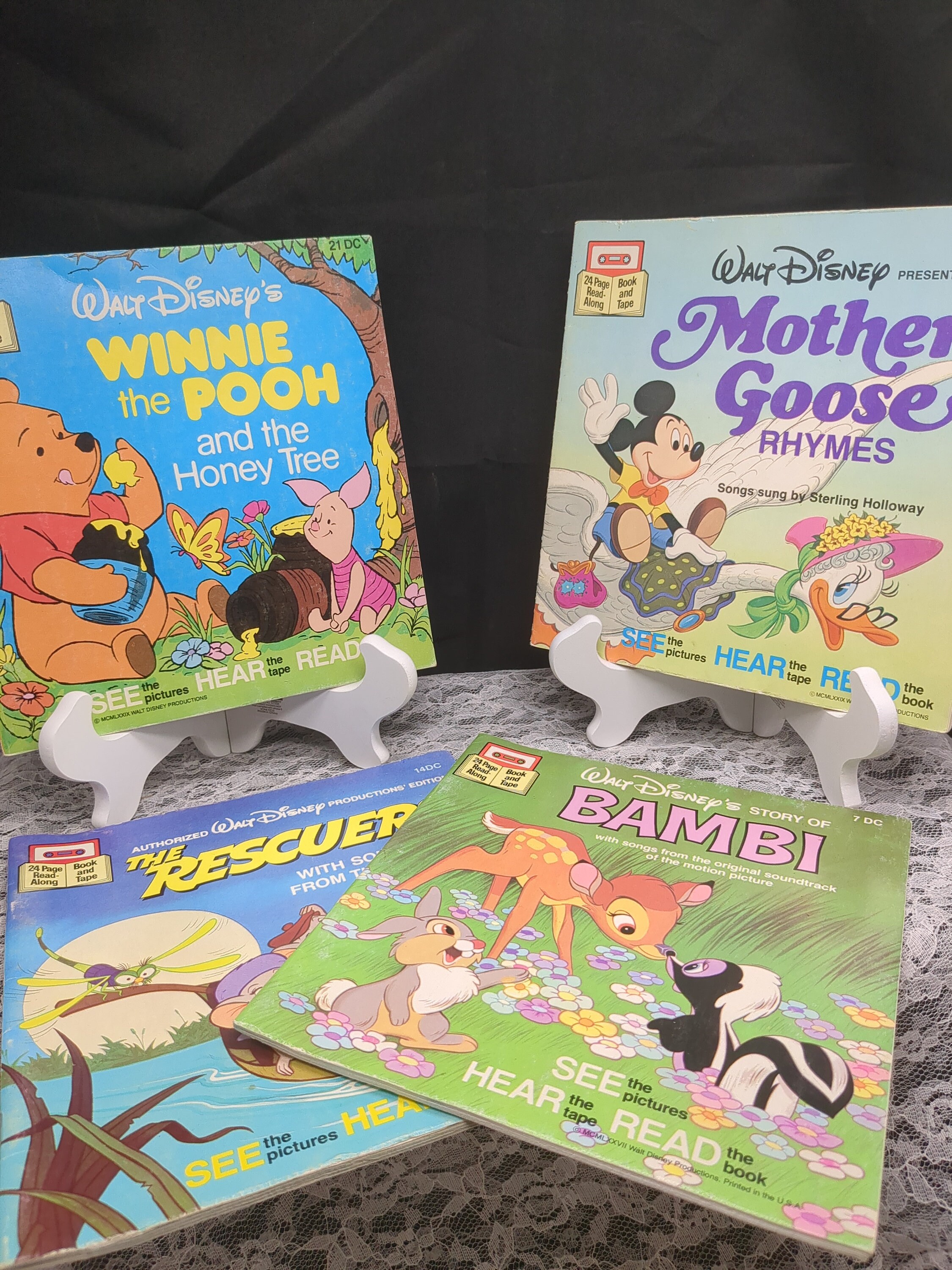Books on Tape: A Comprehensive Guide to Audiobooks

The term “books on tape” might evoke images of bulky cassette players and unwieldy tapes. While the physical format has largely faded, the concept endures, reincarnated as the ubiquitous audiobook. This comprehensive guide delves into the world of audiobooks, exploring their history, accessibility, diverse content, and lasting cultural impact, focusing especially on their significant role in enriching the lives of senior citizens and individuals with visual impairments.
The Evolution of the Audiobook: From Tape to Digital
The journey of the audiobook is a fascinating reflection of technological advancement. Initially, “books on tape” were precisely that: recordings of books onto magnetic audio cassettes. These provided a convenient alternative to traditional reading, especially for those with visual impairments or busy schedules. The Electric Library, a business model reminiscent of video rental stores, exemplified this early era, allowing commuters and others to borrow audiobooks for a short duration.

As technology progressed, cassettes yielded to CDs, offering superior sound quality and longer playing times. The early 2000s marked a watershed moment with the advent of digital audiobooks. Services like Audible, now owned by Amazon, revolutionized access by providing a vast library downloadable to various devices. This digital transition significantly increased convenience and accessibility, transforming the audiobook landscape. This evolution from physical tapes and CDs to readily available digital downloads represents a remarkable evolution in the way people access and consume literature. This convenience has opened up the world of books to a larger audience than ever before.

Today’s audiobook market boasts an incredibly diverse catalog, encompassing a wide range of genres, from action-packed thrillers to classic literature, self-help guides, and educational materials. This readily accessible digital format has made a profound impact on how people consume and share literary content across different cultures.
Genre Diversity and Content Accessibility
The sheer variety of audiobooks available today caters to a vast spectrum of interests. Listeners can find classics from renowned authors alongside modern bestsellers and new releases. Genres span fiction and nonfiction, including romance, mystery, sci-fi, fantasy, historical fiction, biographies, memoirs, and self-help. Educational content, ranging from language learning courses to historical documentaries and scientific explanations, further enriches the audiobook experience. The accessibility of audiobooks, particularly through services like Audible and digital library apps, has broadened access to knowledge and entertainment for millions.

This diverse landscape is essential to note due to its impact on literary appreciation and educational access. The ease of access for various age groups and communities allows them to learn more about the world around them, and also to discover new genres and authors. This accessibility is a significant factor that should be highlighted in this discussion of audiobooks.
Audiobooks and Senior Citizens: Cognitive Stimulation and Enhanced Quality of Life
The benefits of audiobooks extend beyond simple entertainment. For senior citizens, audiobooks offer a valuable tool for maintaining cognitive health and enriching their daily lives. As eyesight naturally diminishes with age, reading can become increasingly difficult and tiring. Audiobooks provide a solution, enabling seniors to continue enjoying stories, learning new things, and staying engaged with the world around them. Listening to audiobooks while exercising is one way that seniors can enhance their lifestyle and health simultaneously.
Studies have consistently shown the positive correlation between mental stimulation and a reduced risk of cognitive decline. The act of listening to a compelling narrative actively engages the brain, enhancing memory, processing speed, and overall cognitive function. Audiobooks, therefore, serve as a powerful tool in preventing cognitive diseases like Alzheimer’s and dementia, contributing significantly to the well-being of older adults. The convenience of using a phone or tablet also plays a key role in this aspect of accessibility for seniors.
Public Libraries and Audiobook Resources for Seniors
Accessing audiobooks doesn’t have to be expensive. Public libraries across the globe offer extensive audiobook collections, often available for free with a library card. Many libraries utilize digital lending platforms, such as Overdrive, enabling users to borrow and download audiobooks directly to their smartphones or computers. This accessibility is paramount to ensuring that every individual can benefit from the literary world.
Beyond public libraries, specialized services cater specifically to the needs of visually impaired individuals. The National Library Service (NLS) for the Blind and Physically Handicapped, a program of the Library of Congress, provides a vast selection of audiobooks, braille materials, and magazines free of charge. Organizations like LibriVox further augment these resources, offering free audiobooks recorded by volunteers. These services play a critical role in ensuring inclusivity within the literary world.
Commercial Audiobook Services: Advantages and Considerations
While free options are readily available, commercial audiobook services like Audible and Audiobooks.com offer a broader selection and often include new releases and bestsellers. These platforms generally operate on a subscription model, providing access to a certain number of audiobooks per month for a recurring fee. While potentially more expensive than borrowing from a library, the convenience and vast selection often outweigh the cost for avid listeners. Both Audible and Audiobooks.com offer free trial periods, allowing users to test the service before committing to a subscription.
The cost-benefit analysis of commercial services versus free library resources is critical to mention. While commercial services provide the most up-to-date selection, library options are effective for many users who don’t require the latest titles.
Pricing Models and Subscription Plans
Audible and similar platforms employ varying pricing structures, often including monthly subscription tiers. These usually grant access to a set number of audiobooks each month, with additional titles available at an extra cost. The cost per audiobook varies, and those who consume audiobooks quickly or only listen to titles once may find the overall expense substantial. It’s crucial for consumers to carefully evaluate their listening habits and the available pricing plans before committing to a subscription. The trial periods offered by these services allow consumers to evaluate the services before committing.
Careful consideration of the value and affordability of these subscription services is crucial to a balanced discussion of audiobooks.
The Cultural Impact of Audiobooks: Adaptability and Community Building
Audiobooks have profoundly influenced the cultural landscape, transcending their role as mere reading alternatives. The widespread adoption of audiobooks has led to a significant increase in literacy rates and access to storytelling across various communities. The accessibility of audiobooks has had a significant effect on global access to literary works and the sharing of stories across cultures.
Literary Adaptations and Audio Performances
Audiobooks have fostered new creative avenues. Many audiobooks feature professional narrators who bring stories to life with their vocal talents and interpretations. These performances enhance the listener’s immersion in the narrative, creating a unique and engaging experience that can differ greatly from a silent reading. Audio adaptations have also introduced literary works to new audiences and revived interest in classic novels and plays.
This adaptation has created a whole new appreciation for the literary world and accessibility for different types of people.
Audiobook Communities and Shared Experiences
Audiobooks have also facilitated the formation of online communities, connecting listeners around shared literary interests. Social media platforms, forums, and online book clubs have become vibrant spaces for readers to discuss stories, share perspectives, and connect with other audiobook enthusiasts. This communal aspect of the audiobook experience fosters a sense of shared understanding and intellectual stimulation, extending the benefits of listening far beyond the individual experience.
Conclusion: The Enduring Power of the “Books on Tape” Legacy
While the technology behind “books on tape” has undergone a dramatic evolution, their fundamental power remains—offering an accessible and engaging way to access literature and maintain cognitive health. Audiobooks serve as a gateway to knowledge and entertainment for millions across different cultures, connecting individuals around shared stories, and enriching their daily lives. The accessibility provided by audiobooks is a paramount aspect that makes this form of literature accessible to a larger audience. From the quiet solitude of personal listening to the active participation of online book clubs, the legacy of “books on tape” continues to resonate in the ever-evolving world of digital storytelling.